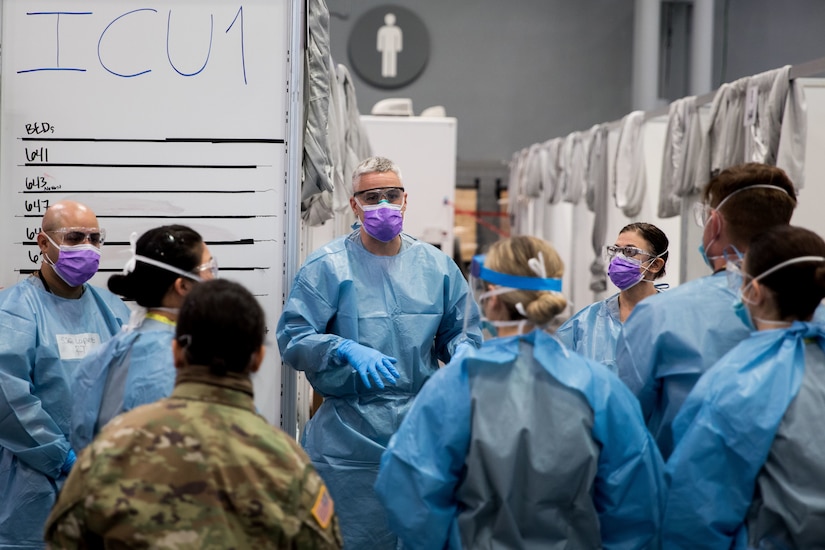Any listing of personnel, equipment and facilities involved — as impressive as it might be — doesn’t begin to explain what’s at the heart of the Defense Department’s effort to combat COVID-19, the Joint Staff surgeon said.
It’s about people helping people, flattening the curve, and slowing the spread of the pandemic so hospitals have a bit more time to prepare for the total number of patients, Air Force Brig. Gen. (Dr.) Paul Friedrichs said during a Pentagon news conference yesterday.
And it’s about saving lives, he added.
Friedrichs thanked the reservists who stepped forward when the call went out for volunteers and mobilized on short notice.

“In fact, many of them are moving to New York as we speak,” he said. “These are folks who identified that they could leave their communities and support the broader effort back in uniform.”
New York City is the hotspot for COVID-19 in the United States. The Navy hospital ship USNS Comfort is there. An Army field hospital is operating out of the Javits Convention Center. These are there to supplement the hospitals of the city and support the medical teams.

“We would all be very happy if there’s not a surge of patients that overwhelm the New York hospitals,” Friedrichs said. “But the people of New York need to know that if the hospitals are full, we’re there, and we will deliver great care to them.”
The reservists that DOD is sending to New York are going to augment the hospitals so that the hospitals can use their beds and their intensive care units primarily for COVID-19 patients, the general noted.
The COVID-19 pandemic requires all people to do their parts, the doctor said. “It starts with each of us as individuals. We have got to share the responsibility for protecting not only our families, but protecting our communities,” he said. “In the military, we do that every day. This is now part of what we as a nation have to do for each other.”
Friedrichs said the entire country is stressed by this dangerous outbreak, and medics are, too. “Is it what we signed up for when we became doctors or nurses or pharmacists? Yeah, we knew we were going to take care of sick people,” the doctor said.
A total of 700 medics volunteered to aid the effort. “These are men and women who stepped up when we asked for volunteers and said that they were willing to leave their communities,” the general said. “I don’t have a breakdown for all 700 of them as far as where they’re coming from. We have 125 Air Force reservists who are going to New York, we have 200 Navy reservists, who are also going to New York.”
“Then we’ve got a variety of other teams, reserve teams, that are going to New Jersey and to Connecticut,” he continued. “The American people are recognizing this is not business as usual, and people are stepping up to help each other out. And that is exactly what you’re seeing with these reservists. My hat’s off to them because they have chosen to leave their homes and come forward when we asked for volunteers to help out. So where do they come from? They come from America. This is what we’re doing. We’re each stepping forward to help each other out.”